How To Take Care of Goldfish
Introduction: The Truth About Keeping Goldfish Healthy
If you’ve recently brought home a goldfish or are thinking about it, you might assume it’s a simple pet to care for, just feed it and change the water occasionally, right? Not quite. Understanding how to take care of goldfish goes far beyond what most people expect. While goldfish are hardy and peaceful by nature, they still require a thoughtfully managed environment and consistent attention.
Goldfish have often been misrepresented as low-effort pets that can live in tiny bowls or jars, needing very little room or care. This misconception has caused many to live shorter, more uncomfortable lives. In reality, goldfish can live over 10 years and in some cases even 20 years if kept in the right conditions. With the proper setup, diet, and maintenance, goldfish can grow large, remain active, and display bright, vibrant colors throughout their lives.
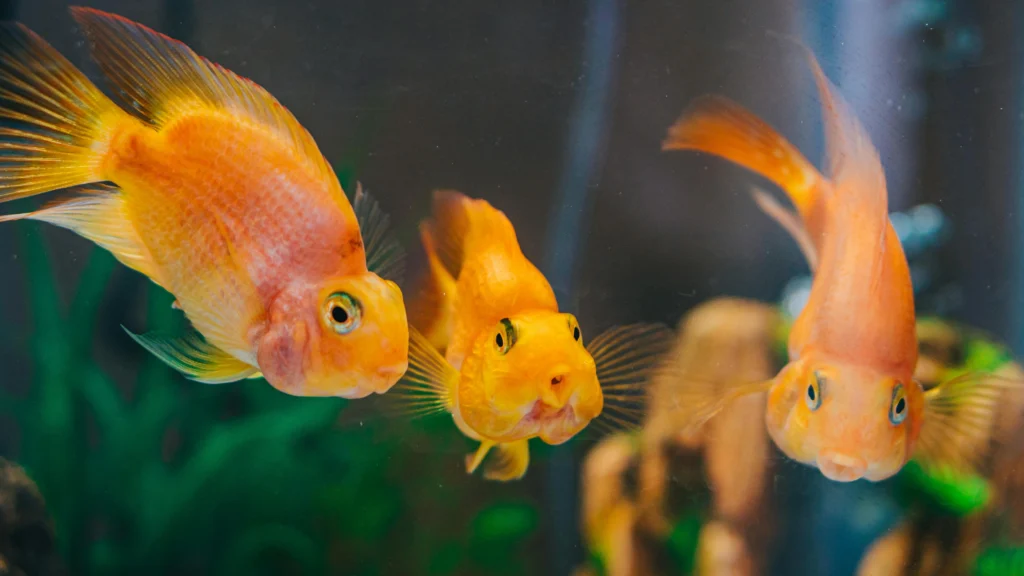
So, what does goldfish care actually involve? First, it means providing them with enough space, far more than a small bowl offers. It also means managing water quality, feeding a balanced diet, and observing your fish for any signs of illness or stress. The good news is, once you understand the basics, caring for goldfish becomes a straightforward routine. They are interactive pets that can even learn to recognize their owners, making the effort worthwhile.
This guide is written specifically for beginners who want a complete, honest overview of how to take care of goldfish. Each section will break down key areas like tank setup, water maintenance, feeding, and daily care, using real-life advice instead of assumptions or outdated tips.
Whether you’ve owned fish before or this is your very first time, you’ll walk away with clear, actionable steps to keep your goldfish healthy and thriving. With just a bit of knowledge and the right approach, you can avoid the common mistakes that shorten a goldfish’s life and instead create a peaceful, enriching habitat that benefits both you and your aquatic pet.
Table of Contents
Setting Up the Ideal Goldfish Tank
Why a Proper Tank Setup Is the Foundation of Good Goldfish Care
One of the first and most important steps in learning how to take care of goldfish is setting up a tank that supports their health and longevity. Despite what’s often shown in movies or at carnivals, goldfish do not belong in tiny bowls or unfiltered jars. In reality, these setups lead to stress, poor water quality, stunted growth, and ultimately a shortened lifespan.
As freshwater fish, goldfish tend to produce a substantial amount of waste. They need a stable, well-maintained environment that gives them enough room to swim and grow. If you’re committed to giving your goldfish a long, healthy life, investing in the right tank from the start is essential.
Choosing the Right Size and Shape for Your Goldfish Tank
When it comes to how to take care of goldfish, bigger is always better. A goldfish needs a 20-gallon tank or larger to ensure proper space and comfort. If you’re keeping more than one, add an extra 10 to 15 gallons per fish. Common goldfish varieties, such as comet or shubunkin, grow even larger and are more active swimmers, they need even more space.
Goldfish also thrive better in wide, rectangular tanks than tall or round ones. A longer aquarium improves oxygen exchange and provides ample space for swimming. Avoid bowls completely, they lack proper filtration, reduce oxygen levels, and make it difficult to maintain clean water.
Essential Equipment for Goldfish Tank Setup
Proper filtration is not optional when figuring out how to take care of goldfish. Compared to most freshwater fish, goldfish produce a significant amount of waste due to their eating habits. A quality filter helps remove waste, prevent ammonia spikes, and maintain a stable nitrogen cycle. Choose a filter rated for a bigger tank than your own; it’s always better to filter too much than too little.
Other essentials include a reliable water conditioner to remove chlorine and chloramine from tap water, a gravel vacuum for regular cleaning, and a thermometer to monitor temperature. Goldfish do best in cooler waters between 65°F and 75°F, so heaters are usually unnecessary unless your room is cold.
A good tank setup is more than just a habitat, it’s a foundation for healthy, happy fish. Take the time to get it right, and your goldfish will reward you with years of vibrant life.
What Do Goldfish Eat?
Feeding Goldfish Properly Begins With Understanding Their Needs
Knowing how to take care of goldfish isn’t just about tank cleaning and water changes what you feed them plays a huge role in their health and lifespan. Many new owners think goldfish can survive on cheap flakes alone. While they might survive for a while, they won’t truly thrive without a proper, balanced diet.
Goldfish are opportunistic eaters. That means they’ll eat almost anything you drop into the tank, whether it’s good for them or not. Because they don’t have stomachs, the food they eat passes quickly through their system. Poor-quality or starchy foods can cause bloating, water retention, and illness over time. To give your goldfish a long, vibrant life, you need to be thoughtful about what goes into their diet.
The Best Foods for Goldfish Health and Longevity
If you’re serious about how to take care of goldfish, start with a high-quality pellet specifically made for goldfish. Pellets are usually more nutritious than flakes and less likely to pollute the water. Look for food with real ingredients fish meal, spirulina, and vegetable matter, and without excess fillers or artificial dyes.
Don’t stop at commercial food. Goldfish enjoy and benefit from fresh vegetables like blanched peas (with the skin removed), spinach, and zucchini. These foods are gentle on their digestive system and can prevent constipation and swim bladder issues. A tiny portion once or twice weekly is sufficient.
You can also offer protein-rich snacks like freeze-dried bloodworms or brine shrimp. These should be used as treats, not staples. Once a week is ideal, and only in small portions.
Remember, variety isn’t just good for their health, it keeps them engaged and active.
Feeding Routine and Portion Control
One crucial point in understanding how to take care of goldfish is knowing how much is too much. Feeding too much is a typical mistake that often causes cloudy tanks and ill goldfish. Stick to feeding once or twice a day, giving just enough food to be eaten in under two minutes. Remove uneaten food immediately.
Feeding consistently helps with digestion and builds a daily rhythm that your goldfish will start to recognize. In time, they’ll come to the surface when they see you approach another sign of a healthy, well-cared-for pet.
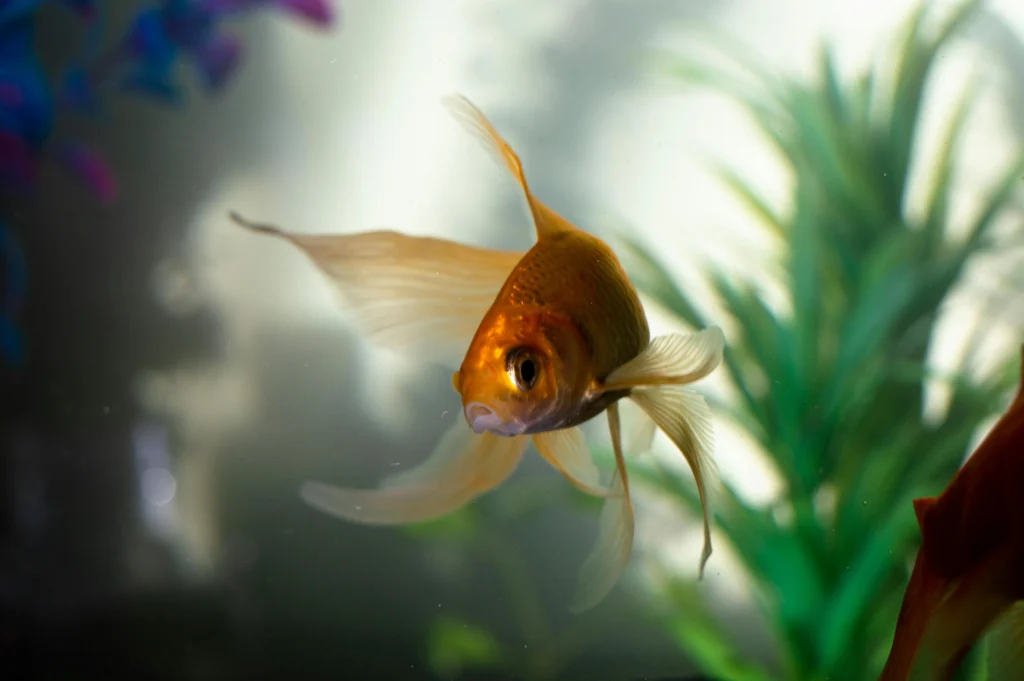
Tank Cleaning and Maintenance Tips
A Clean Tank Means a Healthy Goldfish
One of the most overlooked yet essential parts of learning how to take care of goldfish is proper tank maintenance. Even with the best filter, a goldfish tank will still collect waste, leftover food, and debris over time. Since goldfish are naturally messy creatures, neglecting their environment can quickly lead to poor water quality, harmful bacteria, and stressed or sick fish.
Keeping the tank clean isn’t just about looks it directly impacts your goldfish’s immune system, energy levels, and lifespan. A well-maintained tank supports healthy oxygen levels, prevents toxin buildup, and provides a stable ecosystem where goldfish can thrive. Routine maintenance becomes easier once it becomes part of your weekly care habits.
How Often Should You Clean a Goldfish Tank?
A big part of mastering how to take care of goldfish involves creating a simple cleaning schedule. The good news is, you don’t need to break down the whole tank each time. Most of the work can be done with partial water changes and light cleaning.
Here’s a typical routine:
- Daily: Check the water temperature, make sure the filter is working, and remove uneaten food within a few minutes after feeding.
- Weekly: Replace 25–30% of the tank water using a siphon or gravel vacuum. It aids in removing built-up debris and food particles stuck in the substrate.
- Bi-weekly or Monthly: Rinse filter media gently in old tank water (never tap water), clean any visible algae off the tank walls, and inspect decorations for buildup.
Avoid doing full water changes unless there’s a major emergency, as that can shock your goldfish and destroy helpful bacteria.
Helpful Tools and Tips for Easy Maintenance
If you’re committed to learning how to take care of goldfish properly, investing in the right tools makes maintenance quicker and more effective. A gravel vacuum, algae scraper, water conditioner, and a reliable water testing kit are essentials. Regularly testing for ammonia, nitrites, nitrates, and pH can help you catch issues before they affect your fish.
Remember, consistency is more important than perfection. A little time each week goes a long way in keeping your goldfish healthy, active, and happy in their aquatic home.
Creating a Comfortable Environment
Why Environment Matters More Than You Think
When people ask how to take care of goldfish, they often focus on feeding and cleaning routines. But one equally important aspect is the environment your goldfish lives in. A goldfish’s surroundings can either support a long, stress-free life or lead to poor health, anxiety, and disease. Creating a comfortable, well-designed tank isn’t just for looks; it directly affects your fish’s quality of life.
Goldfish are active, curious swimmers. They like to explore, forage, and rest in peaceful spots. A barren tank with no plants, decorations, or variation in layout can be stressful and disorienting. On the other hand, an overcrowded tank with sharp objects or unstable décor can cause injury and increase the risk of illness.
Key Elements of a Comfortable Goldfish Habitat
To truly understand how to take care of goldfish, you need to think about their needs beyond water quality. Start with the substrate. Smooth gravel or bare-bottom tanks are safest. Avoid anything too sharp or small enough to swallow, as goldfish are known to pick at the tank floor out of curiosity.
Adding live or silk plants is a great way to enrich their space. Live plants like anubias, java fern, or hornwort offer shelter, improve water quality, and reduce stress. If you’re not ready for live plants, silk alternatives are better than plastic, which can tear fins.
Decorations should be placed strategically, allowing space for swimming while offering spots to rest or hide. Goldfish appreciate areas where they can retreat when they feel overwhelmed or simply want to relax.
Lighting should be consistent but not harsh. Aim for 8–10 hours a day with a timer, simulating a natural day-night cycle. Just like humans, goldfish benefit from routine. Erratic lighting can disturb their rest and cause confusion.
Water flow is another factor to consider. While goldfish like some movement, strong currents from filters or air stones can exhaust them. Choose a filter with adjustable flow or baffles to slow it down if needed.
A comfortable tank setup reflects your commitment to learning how to take care of goldfish properly. When your goldfish feel safe and stimulated, they’ll show vibrant colors, swim actively, and live longer, healthier lives.
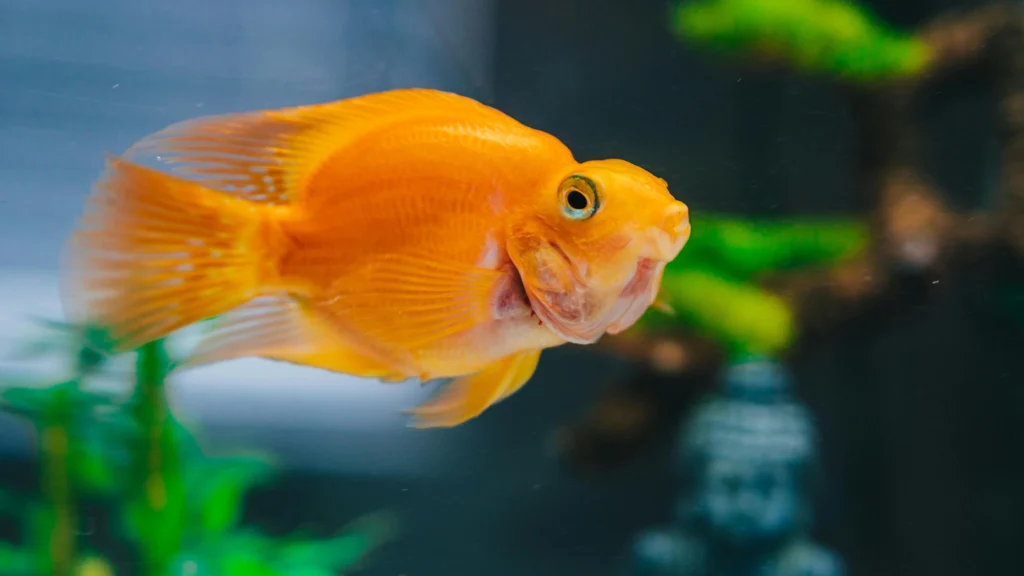
Monitoring Health and Behavior
Recognizing the Signs of a Healthy Goldfish
One of the most important but often underestimated aspects of learning how to take care of goldfish is observing their health and behavior. Goldfish can’t tell you when they’re feeling unwell, so it’s up to you to spot early warning signs and take action. The good news is, once you know what to look for, monitoring your goldfish becomes second nature.
A healthy goldfish is active, curious, and swims with ease. It should have a good appetite, clear eyes, and smooth scales that shine. Its fins should be upright, not clamped to its body. Goldfish are social and interactive if your fish is responsive when you approach the tank, that’s usually a good sign.
What to Watch For: Common Warning Signs
Understanding how to take care of goldfish also means recognizing abnormal behavior or physical changes. Catching issues early can prevent a minor concern from becoming a major problem. These are some signs that may indicate a problem:
- Lethargy: If your goldfish is resting at the bottom or hiding most of the time, it could be stressed, ill, or suffering from poor water quality.
- Loss of appetite: Skipping meals may indicate internal parasites, stress, or disease.
- Erratic swimming: Darting, spinning, floating upside down, or struggling to stay upright often signals swim bladder issues or water problems.
- Clamped fins: When a goldfish holds its fins tightly to its body, it usually means discomfort or illness.
- White spots or fuzzy growth: These could be signs of parasites or fungal infections.
Recognizing these signs early and responding quickly can make all the difference. Test the water first, ammonia, nitrite, or pH imbalances are often the culprits. If the water checks out fine, isolate the fish and consider treatment options based on symptoms.
Making Health Checks Part of Your Routine
A big part of mastering how to take care of goldfish is building observation into your daily and weekly routine. Take a minute during feeding to watch how your goldfish swims, eats, and behaves. Weekly water testing is also key clean water equals a healthier fish.
By being proactive, you’ll catch small issues before they become big problems. The more familiar you are with your goldfish’s normal behavior, the quicker you’ll recognize when something’s off and the better you can respond.
Final Thoughts: How To Take Care of Goldfish the Right Way
Taking the time to truly understand how to take care of goldfish can make the difference between a short-lived pet and a vibrant companion that thrives for many years. Goldfish are commonly mistaken for low-maintenance pets, but they actually need consistent care, a clean and roomy habitat, and daily attention to thrive.
Throughout this guide, you’ve learned that goldfish need more than just food and water. They need space to swim freely, water that’s consistently clean and toxin-free, and a balanced diet tailored to their nutritional needs. Providing a safe habitat with live or silk plants, smooth gravel, and proper lighting helps create an environment where they feel secure and active.
Monitoring your goldfish’s behavior is just as essential. Changes in appetite, movement, or appearance often signal health issues that can be treated early if caught in time. Caring for goldfish requires attentiveness, quick responses, and a proactive approach. Whether it’s testing water regularly, adjusting the temperature, or tweaking their feeding schedule, every small step plays a big role in their overall well-being.
The effort you invest in your goldfish is returned tenfold. When properly cared for, goldfish display unique personalities, build routines, and even recognize their owners. It’s a rewarding experience that goes far beyond the basics.
Caring for goldfish isn’t just a task, it’s a long-term commitment that brings joy, relaxation, and beauty to your home. By applying what you’ve learned about how to take care of goldfish, you’re not only giving your pet a better life, you’re also gaining a deeper appreciation for the responsibility of pet ownership.
Stay consistent, stay curious, and your goldfish will thrive under your care.
FAQs: How to take care of goldfish
1. How much space do goldfish really need?
Goldfish grow larger than most people expect, and they produce a lot of waste. A small bowl is never ideal. If you’re new to goldfish care, begin with a minimum of 20 gallons for a single fish. Add extra space if you plan to keep more. A roomy tank supports better water quality and healthier, more active goldfish.
2. Is a filter necessary for a goldfish tank?
Yes, a filter is essential, not optional. Goldfish tend to be messy eaters and produce a significant amount of waste, which can rapidly contaminate their water. A strong, reliable filter keeps the environment stable and reduces harmful toxins. Anyone serious about how to take care of goldfish should always include filtration in their setup.
3. What’s a safe and healthy diet for goldfish?
A healthy goldfish diet is more than just flakes. Offer a variety of foods like sinking pellets, blanched vegetables (zucchini, spinach), and occasional protein snacks like brine shrimp. Understanding how to take care of goldfish means feeding them nutritious, varied meals while avoiding overfeeding, which leads to health issues.
4. How do I keep goldfish water clean?
Goldfish need clean water to thrive. Perform partial water changes of about 25–30% weekly, and use a gravel vacuum to remove debris. Regularly test the water for ammonia, nitrites, and nitrates. If you’re wondering how to take care of goldfish, water quality is the #1 factor in their long-term health.
5. Can goldfish live with other fish species?
Goldfish can coexist with other peaceful, cold-water fish, but it’s important to proceed with caution. Avoid tropical or aggressive tankmates. Ideal companions are those that don’t compete for food or nip fins. Learning how to take care of goldfish includes choosing compatible roommates to reduce stress and aggression in the tank.


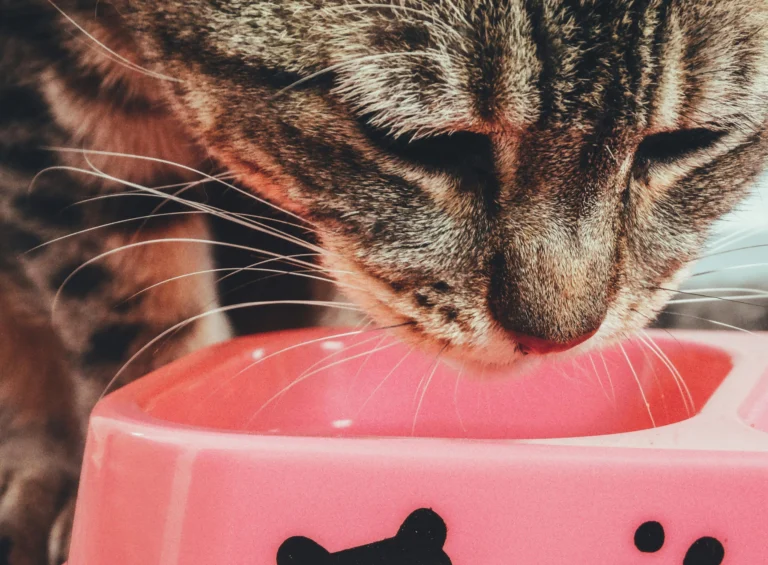



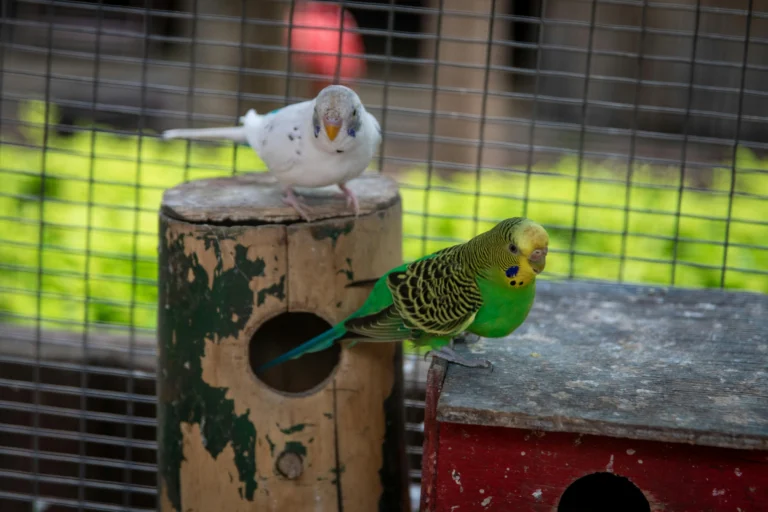

One Comment